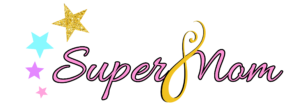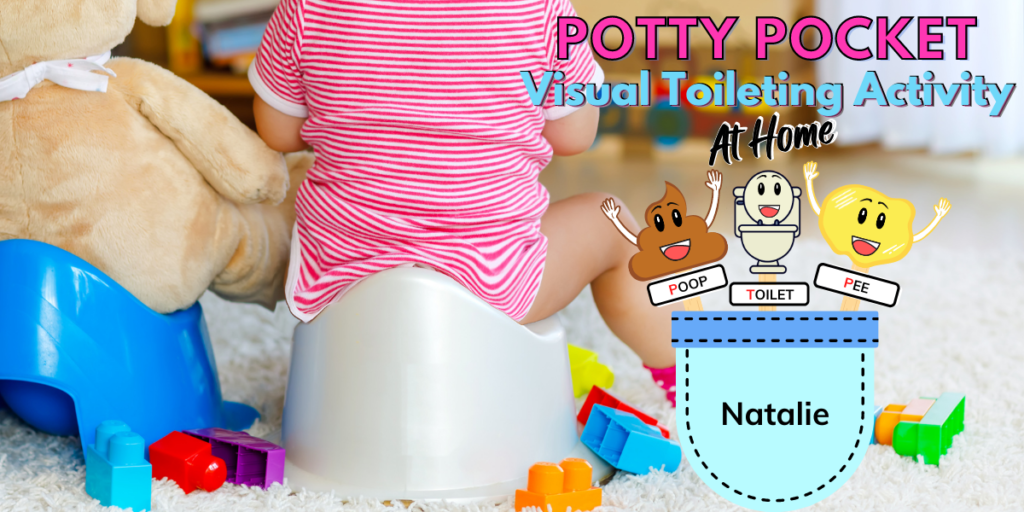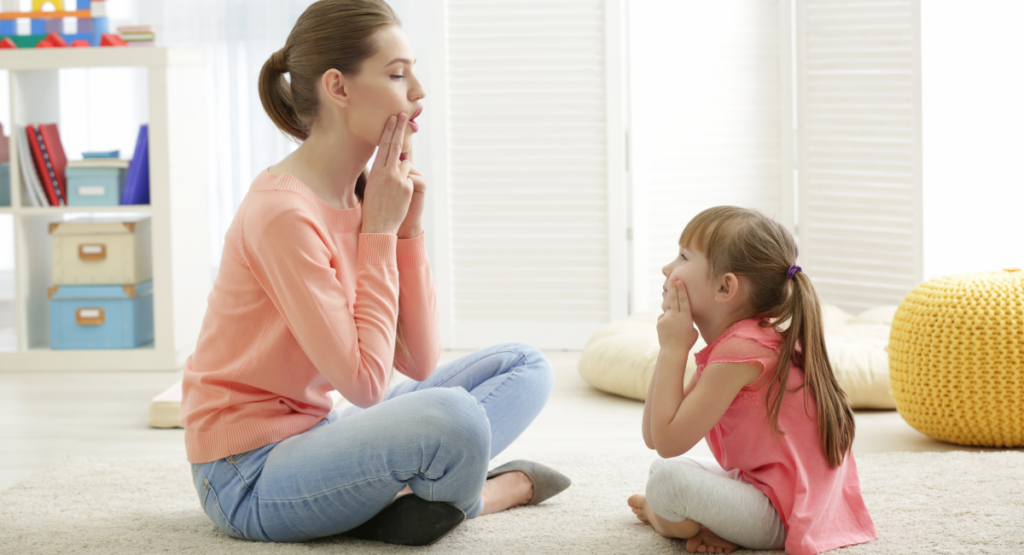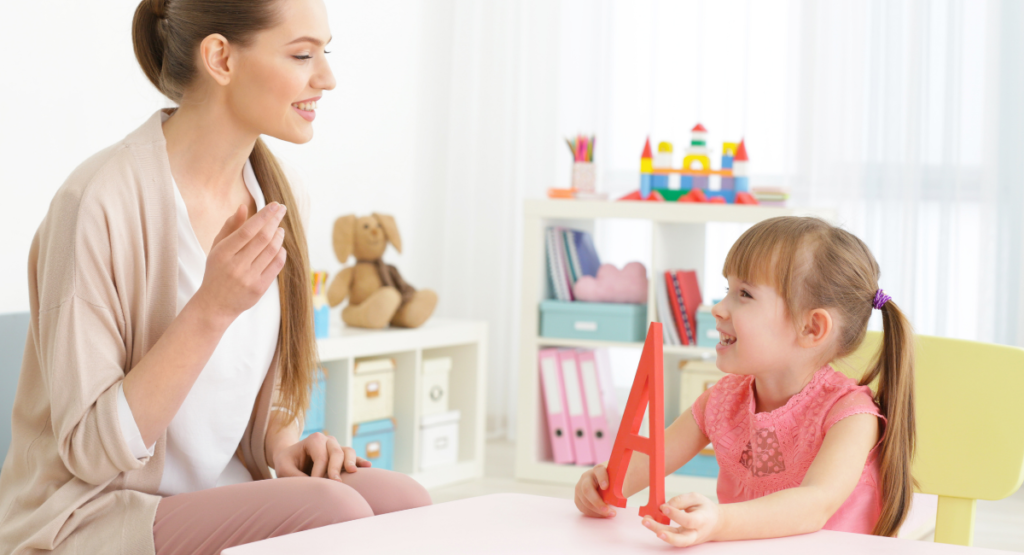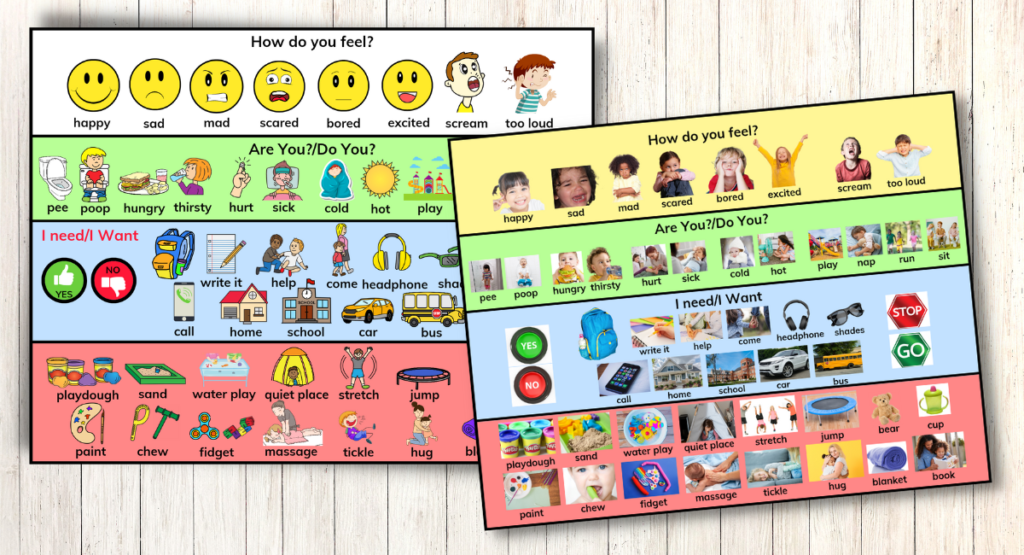
Best Communication Board for Kids at Home or in the Classroom
The Best Autism Visual Communication Chart creates a communication outlet for children who are speech delayed and nonverbal. The Visual Communication Chart is a One Stop Page with all the necessary wants and needs of a child included. The Communication Board will help you better understand your child or students by offering visuals he or she mostly see, want, need and require on a day-to-day basis. Communication Charts encourage the development of speech with verbal repetition of the images/visuals and also Language Development by pointing and utilizing sign language.
My daughter was first Diagnosis with a Speech Delay at 18 months and Autism at age 2. I believed in my heart she would someday talk and tell me she loves me. At two years old she would only make noise/sounds. I saw potential and had HOPE. I began to slow down and focus more on talking to her about everything throughout our day.
Initially, I would just put her clothes on saying a few words like shirt, shoes and jacket. But that instantly changed and till this day I am even more descriptive, detailing everything. So now I am saying, Shirt on. Pretty blue shirt. Do you like your blue shirt? Moving along to Shoes. Mommy will help you put on your shoe. Your shoes are red. Show daddy your red shoes?
At the Point of her Diagnosis everything got really serious and SuperMomInfinity was created. It was time for me to put on my Caps and help my daughter thrive and strive!!! In addition to verbal expressing every little detail frequently and receptivity we began pointing and using basic sign language.
Speech Delay and Non-Verbal Communication Aid for Kids
Speech delayed and non-verbal children both share challenging communication characteristics. For both, you may notice frustration due to being unable to communicate understandably to their peers. In turn, causing them to become frustrated and even withdrawn from others. However, this One Page Communication Resource can assist your child with communication and develop a voice through visuals.
Witnessing how frustrating my daughter becomes when she is trying to communicate with her peers have led me to create this resource for other parents and educators. If you’re a parent or educator in need of a quick and easy communication aid that is readily available to help assist children with expression and communication, the 51 Visual Communication Chart will be perfect for you both!!!
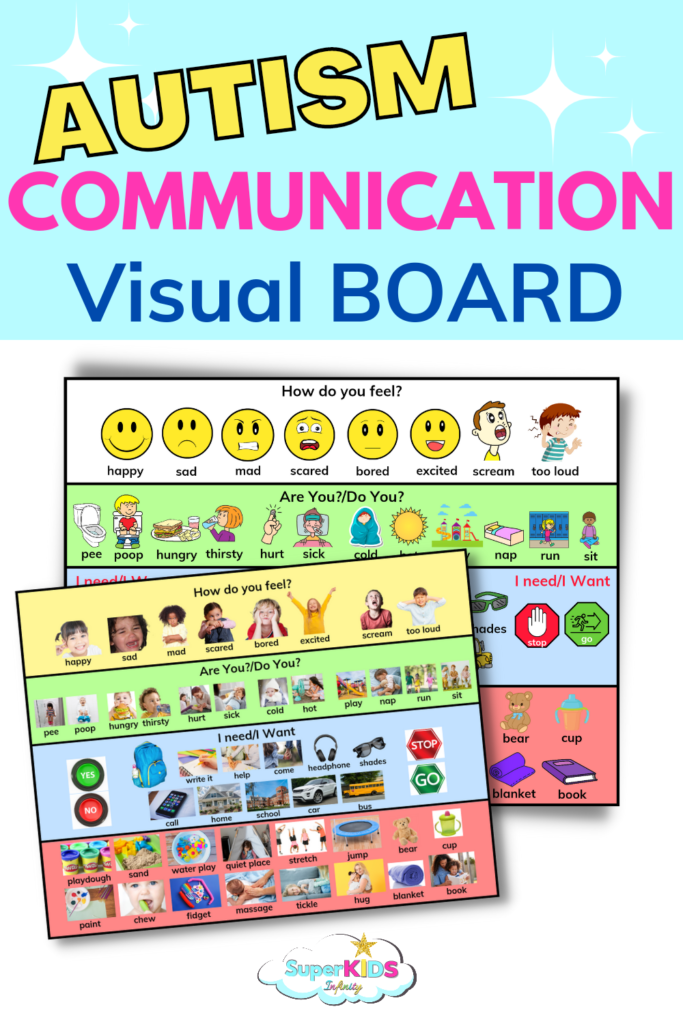
Nonverbal Communication Board
Nonverbal children need a communication resource that is specific to his or her daily needs and desires. View the images/visuals within the Communication Chart to see if this Chart is right for your child. Children who are nonverbal may utilize The Communication Board to communicate with others. This Board is the Best One-Page Communication Board to meet your child’s specific needs and wants.
Autism Communication Chart for Kids
Autism Communication Chart will help your child or students have a voice at home or in the classroom. The Communication Chart lists things children need on a day-to-day basis. This chart creates a new way of communicating for toddlers, preschoolers and kindergarteners with communication barriers. Encourage your child to point or sign what he or she is requesting.
Teach Pointing Skills and utilize Sign Language collectively with a verbal description of each image during your communication exercises. Implementing alternative communication strategies will build and develop a communication foundation for your child or students.
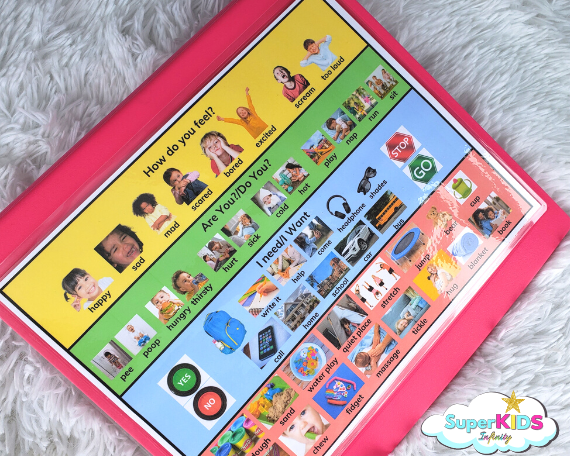
How to Introduce a Communication Visual Aid to my Child or Student?
Introduce the Communcation Board to your child or students as soon as possible. Keep the Communication Chart close by, put it in a binder, adhere a magnet to the back and place it on the fridge or a white board. Show, point, tell and demonstrate the visuals verbally and with sign language.
At Home Communication Chart
Dedicate a week to introduce the Communication Chart to your child one on one. Have the Chart near and close by. Use the chart with your voice throughout the entire day. You want your child to become very familiar with each image and utilize pointing or sign language to communication what’s desired at that moment. This will be purposeful, especially if you plan to transition your child from home to an educational environment in the future.
For a least a week all form of communication with your child will follow the Communcation chart.
Special Education Communication Chart for Kids
For best practice you want to introduce the Communication Chart to your students one on one! However, introducing the Communication Chart collectivity benefits the whole classroom. For introducing the Communication Board to your Toddlers, Preschoolers and Kindergarteners you will want to review the chart frequently for an entire week.
Print copies for each student and add the Communication Chart into your lesson plan. Most children whether or not a delay or disability is present, all children learn best with repetition. Don’t forget to laminate your Communication Charts and send one home with your students. Encourage your parents/caregivers to utilize the Communication Board frequently!!!
Communication Development and Communication Visual Aid
- 10 Strategies to Develop your Childs Speech and Language Skills
- Potty Training Visual Aid POTTY POCKET
- Teach Communication Development with Mr. Potato Head!!!
Communication Teaching Strategies for Speech Delayed, Nonverbal and Autistic Children
Here are the best strategies to teach your child how to learn All things and Anything. Your child will receive a ton of repetition that will encourage them to memorize, understand, recognize and identify. Here’s my Secret Teaching Formula with a ton of Repetition!!!
SHOW & TELL
Communication development is learned by your child with frequent repetition of hearing and seeing what is being said. So, your child will frequently see images/objects, people, words and hear the description of each being voiced, pointed to or signed for.
You will show your child an image, object, person, etc., by pointing and saying the word (you are implementing the Show and Tell Method). The Show and Tell Method helps children with developmental delays and disabilities to understand and learn the appropriate use of words. In return, your child will use pointing to communicate his or her needs and wants.
POINT & TELL
Pointing is a great form of communication and is typically the go-to method for toddlers. Pointing can be a skill for late talkers, special needs children, and is used by children on the Autism Spectrum. You can voice a sound or word from the Chart and encourage your little one to point to the image. Sometimes pointing assistance may be necessary. Encourage your child to use his or her little pointer and guide their finger to the image.
DEMONSTRATE & TELL
Children learn best by modeling what he or she sees. By you frequently pointing and vocalizing what’s being pointed to will encourage your child to do the same. However, you may need to assist with demonstration (assist with pointing) by creating a pointer using your child’s index finger. Point to the image/object, person place, etc. and say its description.
REPEAT!!!
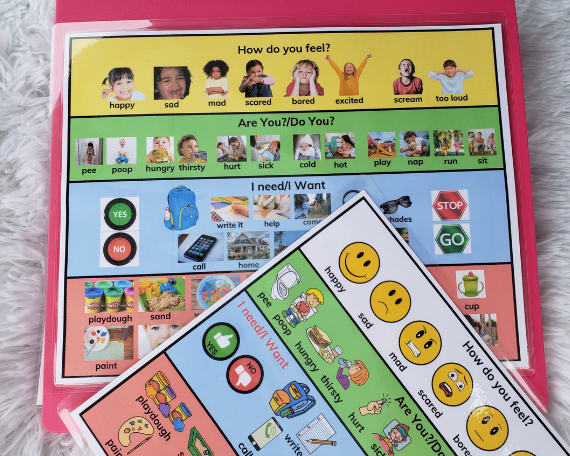
Realistic Communication Charts vs. Clip Art Graphic Visual Aid
The Realist Communication Chart was created first. Realistic images/objects, people and places are familiar to the human eye. Meaning as people/children are more familiar with realism and may adapt better to the Realistic Chart more than the Clip Art Graphic Visuals. The Clip Art Graphic Chart is fun. It may even draw in your child’s interest resulting in a faster comprehension of the images and its purpose. Either way you can receive both!!!
The One Page Visual Communication Chart is designed to:
- Meet your Child’s Emotional Needs
- Identify and Manage Triggers
- Target Activities of Daily Living
- Communicate Wants and Needs
- Prevent Behaviors
- Assist with Transitions
Also, the basics of meeting a child’s needs who is on the Spectrum with communication barriers and SPD!
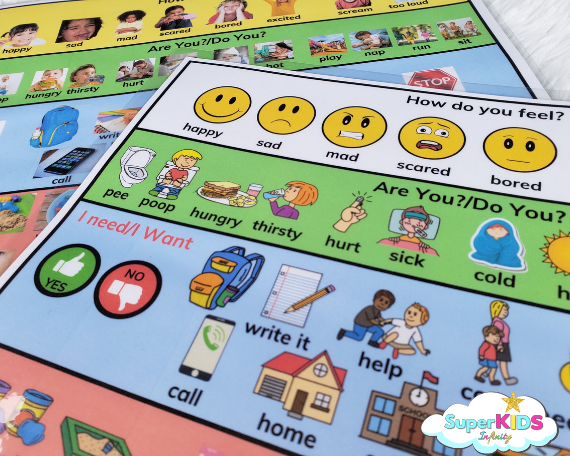
Best Communication Aid for Kids
The Best Communication Board for your child and or students is right here and here’s why. This Communication Chart includes four dedicated section that cater to your child’s social/emotional development, acknowledge activities of daily living, include specific preferences, list common triggers and sensory soothing options!!! Grab both as a set or choose your favorite design below!
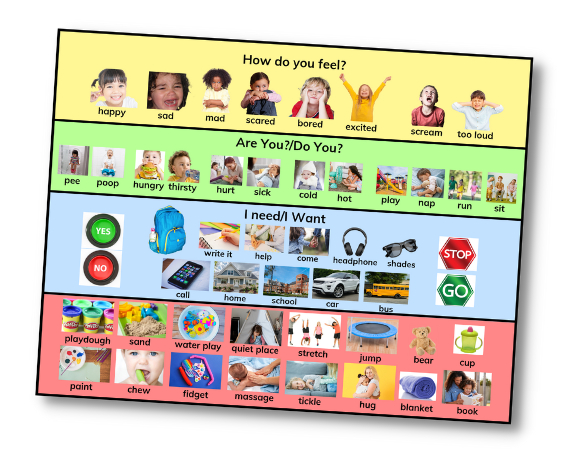
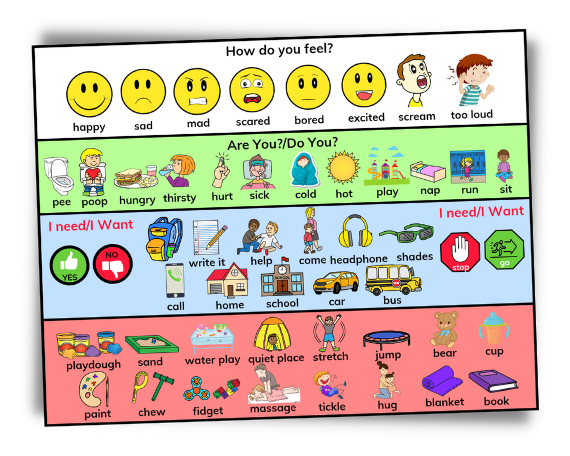
Autism Communication Story
Your child may use the Visual Communication Chart at home as an assistive device to communicate his or her wants and needs. The Speech and Language Communication Board was initially created for my 4-year-old daughter. She has Autism, SPD and a Speech Delay. She is also a Super Awesome SuperKid!!!
I gave the more realistic Communication Board to her PreK4 Teacher because my daughter was having a hard time communicating her needs and wants at the beginning of her PreK 4 school year. She began to elope due to overstimulation of the loud cafeteria, had classroom behaviors due to lack of understanding from both child and teacher. This was also a major transition from PreK 3 to PreK 4 for her. Some new students, new routine and schedule.
In PreK 3 she didn’t eat in the cafeteria, however in PreK 4 she was required to eat in the cafeteria and that’s where she began to elope. 
She and others now eat in the classroom as the year before. I went on to create the clip art Communication Chart which matches the images of the Realistic communication Visual Board. What an amazing Communication Resource I must say!!! I am Truly honored to share our story and resources with you!
Frequently Ask Questions
What can I Teach with a Communication Visual Board for Kids?
This Communication Visual Board is a great resource you can use to teach toddlers, preschoolers, and kindergarteners with communication barriers. Here are some ideas you may consider teaching your child or students with this Communication Visual Board:
- Transition
- First, Next and Then
- Potty Training
- Emotions/Feelings
- Opposites
Who are Communication Visuals for?
Communication Aids are for Children with Special Needs, Speech Delays, Nonverbal Children, Children with Autism and even Early Learners needing assistance communication his or her wants and needs!!!
How do Visual Aids help Children with Autism?
Visual Aids are helpful for children with Autism due to the common Sign of Autism that most children with Autism presents. That Sign is Speech and Language Delay and or Nonverbal. With a Visual Aid near your child at all times, the Aid is used as your child’s voice. This Aid will help your child express thoughts, communication with others, develop self-confidents and self-esteem.
Where can I use my Communication Visual Board?
You can use your Communication Board at home, in the classroom, at the store, in the car, and in any environment.
Best Visual Potty/Toileting Communication Activity For Special Needs
Special Needs Visual Communication Potty Training Activity Potty Pocket is a fun visual interactive potty…
Mr. Potato Head | Teach Toddlers Communication Development with Mr. Potato Head
Teach Speech and Language Skills with Mr. Potato Head Mr. Potato Head has many assets…
The Best Speech and Language Toys For Toddlers
Top 10 Speech and Language Developmental Toys Toys for toddlers are fun and exciting essentials…
